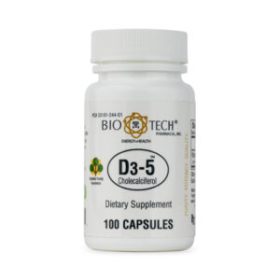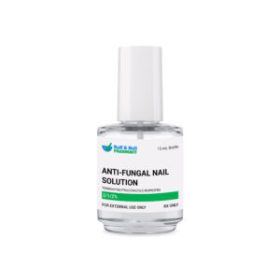Clean and dry skin should be treated once every evening. For inexperienced users, start with the Sensitive strength three evenings per week, then progressively nightly as tolerated after fourteen days; patients with strong skin might start with the Mild strength. Only after 812 weeks of weak formulation without moderate irritation should escalation to the Strong level happen.
Twelve weeks are usually needed in acne treatment courses for maximum lesion reduction; dyschromia or photoaging improvement may persist for six months; assess every Three months for adjustment of potency or frequency.
Tretinoin
It’s very effective for treating acne by helping to clear clogged pores and reduce inflammation.
Tretinoin can be used alone or combined with other treatments to manage various skin problems. In addition to its skin uses, tretinoin is also taken by mouth to treat a specific type of blood cancer called acute promyelocytic leukemia (APL), especially when other chemotherapy options aren’t suitable.
Azelaic Acid
It’s used as a topical treatment for acne and inflammatory skin conditions like rosacea.
While scientists don’t fully understand how azelaic acid works, it’s thought to stop the growth of certain bacteria on the skin. It’s generally well tolerated, but some people might experience mild itching or dry skin after using it.
Niacinamide
Niacinamide, also known as nicotinamide, is a form of vitamin B3 found in many foods like meat, dairy, beans, nuts, and green vegetables. It’s important for many body processes, and a lack of niacin can cause a condition called pellagra, which affects the skin, brain, and digestion.
Topically, niacinamide is used by dermatologists to treat various skin issues because it helps reduce inflammation. It’s effective for conditions like acne, certain blistering skin diseases, and itching. Niacinamide also works well with other anti-aging skin treatments, helping to reduce dark spots and redness on the face.
Tretinoin
Tretinoin works by attaching to special receptors in skin cells, which helps reduce inflammation and clear up acne. It boosts the skin’s ability to clean out harmful substances and calms down the immune response that causes redness and swelling in acne.
Specifically, tretinoin lowers the production of certain chemicals like hydrogen peroxide and nitric oxide that contribute to inflammation. It also stops enzymes released by immune cells that can damage skin tissue during acne flare-ups.
Tretinoin helps the skin heal by encouraging immune cells to work better and by reducing other inflammation-causing chemicals.
Besides calming inflammation, tretinoin helps prevent clogged pores (blackheads and whiteheads) by loosening the connections between skin cells. This helps dead skin cells shed more easily and clears out excess oil, reducing the chance of pores getting blocked.
Azelaic Acid
Azelaic acid fights acne-causing bacteria on the skin by slowing their growth or killing them. This helps reduce the inflammation that often comes with acne.
It also blocks certain enzymes that affect skin cell behavior and oil production. By doing this, azelaic acid helps thin the outer layer of the skin and improves how skin cells mature and shed, which can reduce acne symptoms.
Niacinamide
Niacinamide (a form of vitamin B3) helps skin in several ways. One important effect is that it stops a process called glycation, which can damage skin proteins like collagen and cause the skin to look dull or aged.
Like tretinoin, niacinamide also reduces the production of inflammation-causing chemicals in the skin, helping to calm redness and swelling associated with acne and other skin conditions.
Because Tretinoin is a retinoid, people with a confirmed hypersensitivity to vitamin A should stay away from it as much as feasible given the possibility of crosssensitivity. Tretinoin administered in the face of retinoid toxicity could produce retinoic acid syndrome, which might manifest as acute respiratory distress, fever, pleural and pericardial effusion and multiorgan failure.
Products containing propylene glycol should be avoided by persons with propylene glycol hypersensitivity since some of them do. Furthermore care must be taken when applying azelaic acid to dark complexioned people because of the possibility of hypopigmentation.
Most of the negative effects that could show during Tretinoin use come from hypersensitivity and could manifest as pruritus, erythema, xerosis, and pharyngitis. Furthermore, giving patients with obvious symptoms of hypervitaminosis A Tretinoin may cause retinoid toxicity. Additionally, as said before, tretinoin is very teratogenic and thus ought to be avoided in pregnancy as much as feasible, particularly during the first trimester.
Though most of the time well-tolerated, azelaic acid has been linked with serious cases of angioedema, contact dermatitis, dyspnea, and erythema. Pruritus, xerosis, skin hypopigmentation, and urticaria are among the minor responses that can arise following topical azelaic acid use.
Tretinoin is an FDA category C medicine, therefore given during pregnancy carries a great chance of fetal abnormality or loss. Therefore, Tretinoin is not advised in the first trimester of pregnancy or during breastfeeding. Should Tretinoin be administered during the second or third trimester, extreme caution and close monitoring are absolutely vital as fetal malformation is still possible. Women of reproductive age should utilize two methods of birth control before to oral Tretinoin therapy. At least one month following Tretinoin treatment, contraception should be continued.
Classified as an FDA Category B medicine, azelaic acid is one for which investigations on animals have not shown any teratogenic effects and adequate research not been tested on expectant women. As such, azelaic acid can be given when the advantages of its application manifestly outweigh any teratogenic dangers. Given that azelaic acid has very little absorption into maternal breast milk, giving it while breastfeeding is usually safe.
An FDA Category A drug, niacinamide implies that enough research have shown no teratogenic impacts on maternal first trimester fetuses.
Given that Tretinoin is a Category C FDA drug, use during pregnancy carries a great risk of fetal malfunction or loss. Tretinoin is therefore not suggested during breastfeeding.
When the advantages of azelaic acid clearly outweigh any risk of teratogenesis, it can be given. Azelaic acid is usually safe to take when breastfeeding because there is hardly any absorption into maternal breast milk.
Store this medication in its original container at 68°F to 77°F (20°C to 25°C) and away from heat, moisture and light. Keep all medicine out of the reach of children. Throw away any unused medicine after the beyond use date. Do not flush unused medications or pour down a sink or drain.
- Yoham AL, Casadesus D, “Tretinoin”. In: StatPearls [Internet]. Treasure Island (FL): StatPearls Publishing; 2020 Jan-. Available from: https://www.ncbi.nlm.nih.gov/books/NBK557478/– LinkOpens in New Tab
- ”Azelaic acid”, Drug Bank.[Online]. Available: https://go.drugbank.com/drugs/DB00548– LinkOpens in New Tab
- J. E. Frampton, A. J. Wagstaff, “Azelaic Acid 15% gel in the treatment of papulopustular rosacea”, The American Journal of Clinical Dermatology, vol.5, issue 1, pp. 57 – 64, 2004.
- PC Chiu, CC Chan , HM Lin, HC Chiu, “The clinical anti-aging effects of topical kinetin and niacinamide in Asians: a randomized, double-blind, placebo-controlled, split-face comparative trial”, Journal of Cosmetic Dermatology vol.6, issue 4, pp. 243 -249, December 2007. Available: https://pubmed.ncbi.nlm.nih.gov/18047609/– LinkOpens in New Tab
- E. Forbat, F. Al-Niaimi, FR. Ali, “Use of nicotinamide in dermatology”, Clinical and Experimental Dermatology vol.42, issue 2, pp. 137 – 144, March 2017. Available: https://pubmed.ncbi.nlm.nih.gov/28052374/– LinkOpens in New Tab
- N. Schmidt, G.H. Eugene, “Tretinoin: A Review of Its Anti-inflammatory Properties in the Treatment of Acne.” The Journal of clinical and aesthetic dermatology vol. 4, issue 11, pp. 22 – 29, 2011. Available: https://www.ncbi.nlm.nih.gov/books/NBK557478/– LinkOpens in New Tab
- M. Zasada, E. Budzisz, “Retinoids: active molecules influencing skin structure formation in cosmetic and dermatological treatments.” Advances in Dermatology and Allergology vol 36 issue 4, pp. 392–397. Available: https://www.ncbi.nlm.nih.gov/pmc/articles/PMC6791161/– LinkOpens in New Tab
- ”Tretinoin”, Drug Bank. [Online]. Available: https://go.drugbank.com/drugs/DB00755– LinkOpens in New Tab
- A. Zalewska, “Azelaic acid hyperpigmented lesions treatment”, Case Reports and Clinical Practice Review vol.3 issue 3 pp. 204 -207.
- D.L. Bissett, K. Miyamoto, P. Sun, J. Li, C.A. Berge, “Topical niacinamide reduces yellowing, wrinkling, red blotchiness, and hyperpigmented spots in aging facial skin1″. International Journal of Cosmetic Science vol 26, pp. 231 – 238
- ”Azelaic acid – Drug Summary”, Prescribers’ Digital Reference. Available: https://www.pdr.net/drug-summary/Azelex-azelaic-acid-1111#:~:text=An%20occlusive%20dressing%20should%20not,physician%20if%20ocular%20irritation%20persists.





